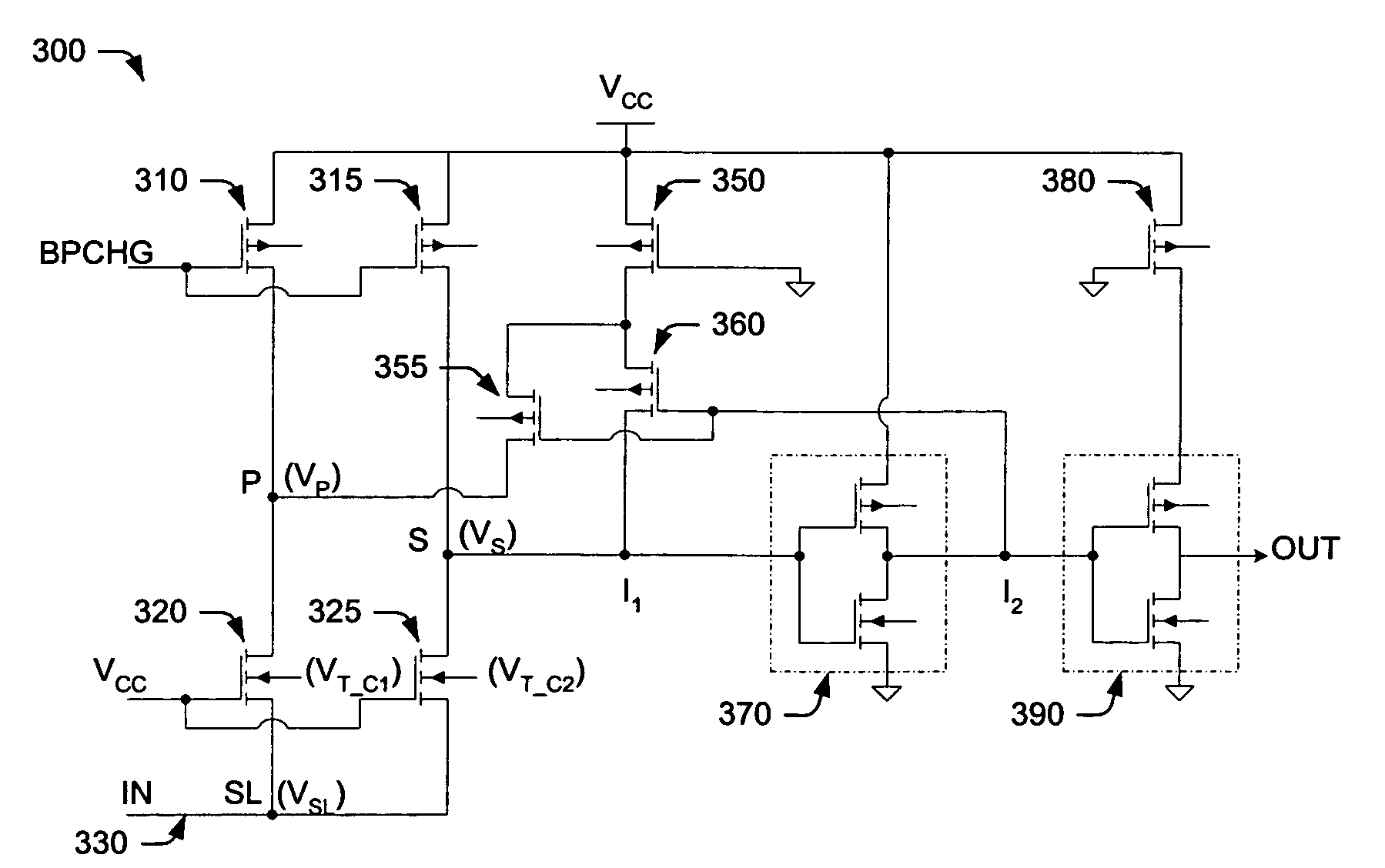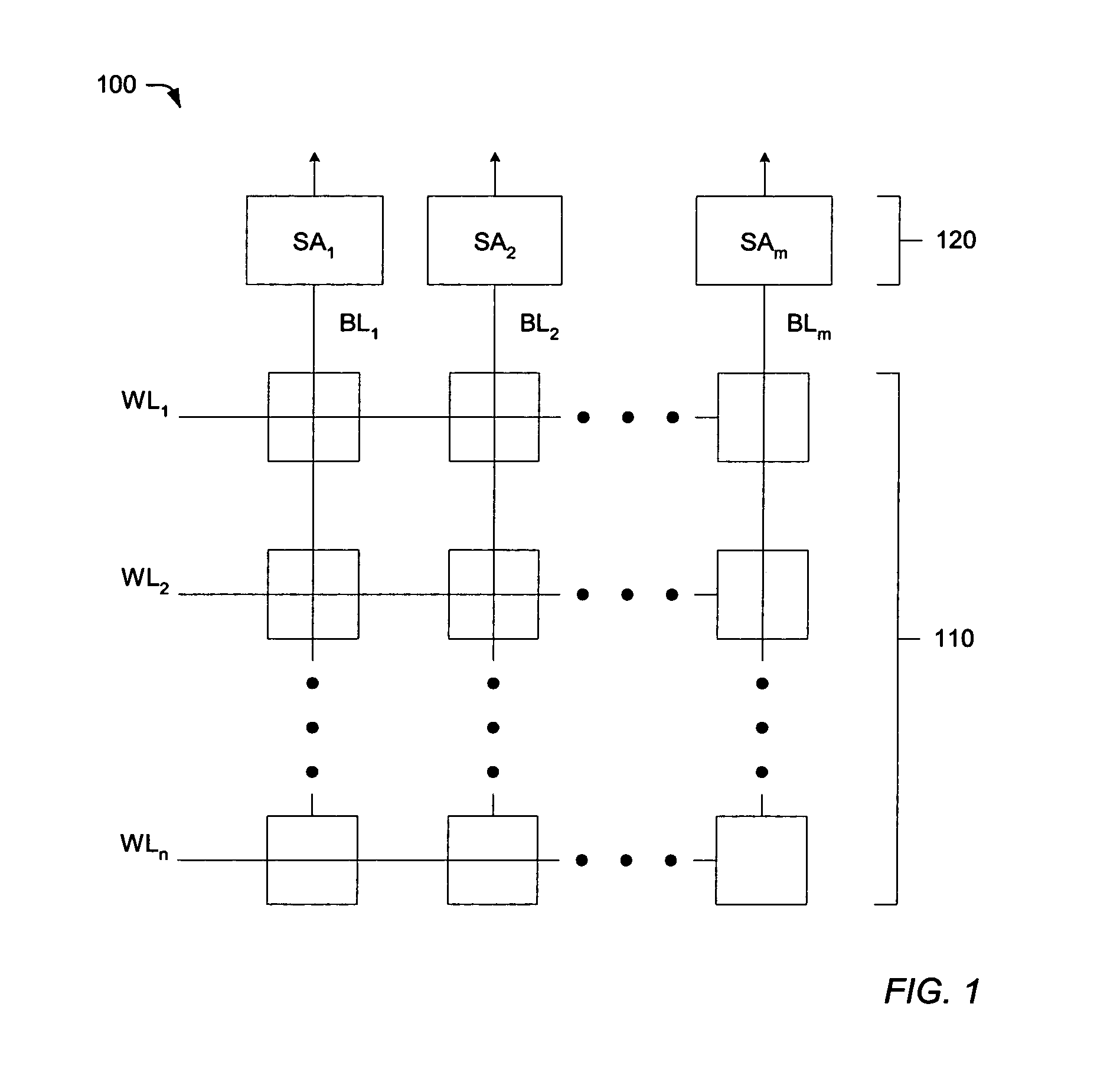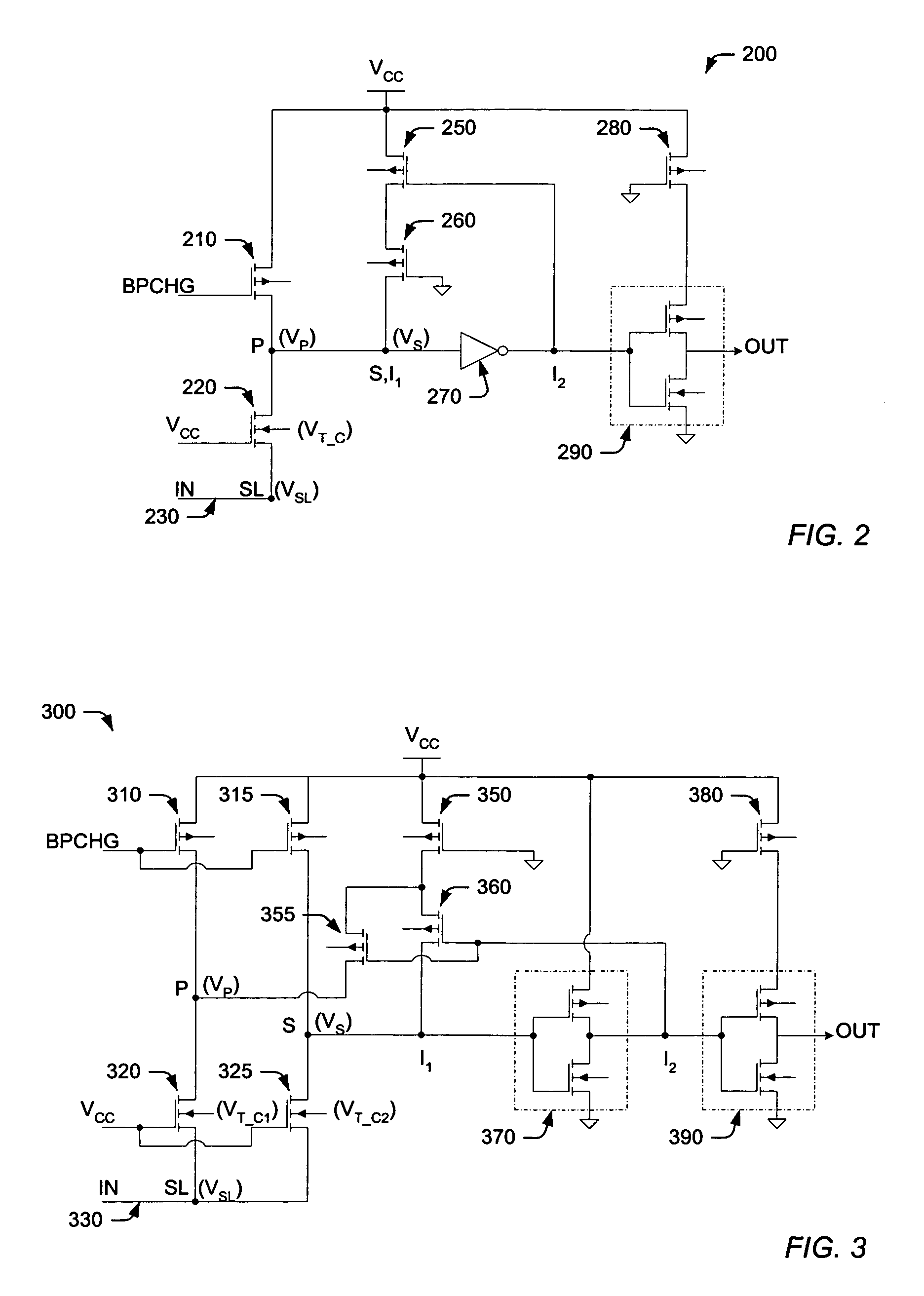Sense amplifier with dual cascode transistors and improved noise margin
a dual-cascode transistor and amplifier technology, applied in the field of sense amplifiers, can solve the problems of power consumption, general volatility of ram storage, cost of reducing noise margins and operational speed, etc., and achieve the effect of increasing the operating speed of the sense amplifier and acceptable noise margins
- Summary
- Abstract
- Description
- Claims
- Application Information
AI Technical Summary
Benefits of technology
Problems solved by technology
Method used
Image
Examples
Embodiment Construction
[0030]Turning now to the drawings, FIG. 1 shows one embodiment of a semiconductor memory device 100, including an array of memory cells and a plurality of sense amplifier circuits. FIG. 1 is not intended to illustrate all details of a semiconductor memory device, and instead, reduces the complexity of the memory device by showing only those components that are useful for understanding how a sense amplifier may be used, in one aspect of the invention.
[0031]As shown in FIG. 1, semiconductor memory device 100 may include an array of volatile or non-volatile memory cells 110. Examples of volatile memory cells include Static Random Access Memory (SRAM) cells and Dynamic Random Access Memory (SRAM) cells, whereas examples of non-volatile memory cells may include Read Only Memory (ROM) cells, Electrically Programmable Read Only Memory (EPROM) cells, Electrically Erasable and Programmable Read Only Memory (EEPROM) cells, and Flash cells. Regardless of the type of memory cell used, the memor...
PUM
 Login to View More
Login to View More Abstract
Description
Claims
Application Information
 Login to View More
Login to View More - R&D
- Intellectual Property
- Life Sciences
- Materials
- Tech Scout
- Unparalleled Data Quality
- Higher Quality Content
- 60% Fewer Hallucinations
Browse by: Latest US Patents, China's latest patents, Technical Efficacy Thesaurus, Application Domain, Technology Topic, Popular Technical Reports.
© 2025 PatSnap. All rights reserved.Legal|Privacy policy|Modern Slavery Act Transparency Statement|Sitemap|About US| Contact US: help@patsnap.com



